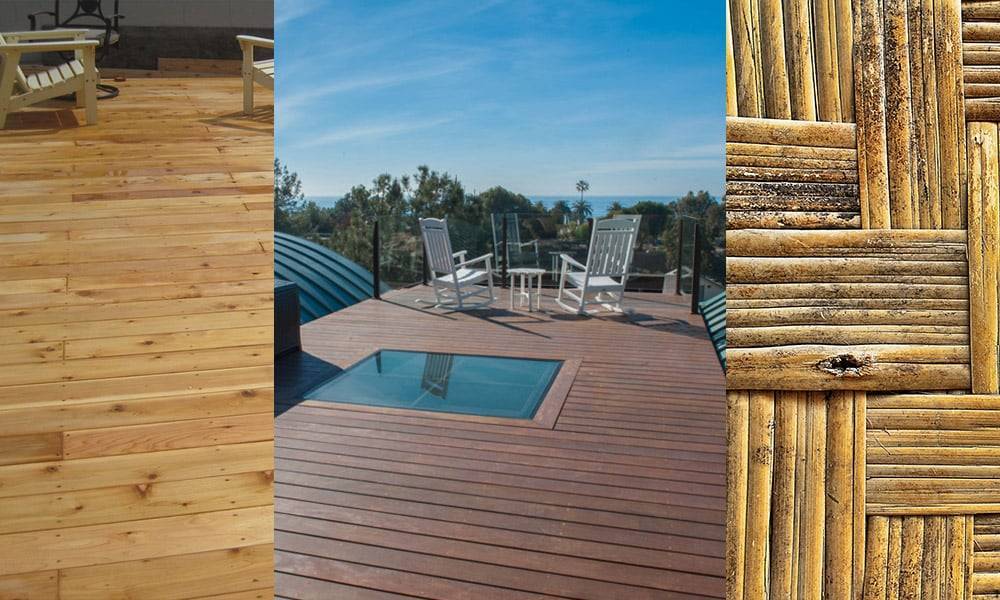The decking industry is constantly growing and it seems like there’s always a “new miracle material” made with fairy dust and rainbows that promises beautiful looks without lifting a finger. However, when we take a deep look into exterior decking products, we begin to see the shortcomings of the miracle materials and the benefits of the tried and true wood decking.
Cedar and other domestic woods like Southern Yellow Pine and Redwood have been the choice material in deck building for decades. These wood choices are standard because they are readily available and are found in our very own backyard.
The only downside, but one that everyone should understand, is the maintenance required. These woods are not long lasting and require sanding and sealing in an ongoing yearly basis. The best part about using these domestic woods is the low upfront cost in material and installation. Most deck builders already know how to work with these woods so labor costs are lower and the building process is a lot faster.
Ipe is another hardwood that’s been popularized in the last 40 years. This hardwood comes directly from the Amazon rainforest in Brazil and although it doesn’t have the history of domestic hardwoods, it has been used for some of the most important boardwalks in the U.S. such as the Coney Island and Atlantic City boardwalks. Ipe is a very hard and very dense wood that lasts for decades with very little maintenance. The maintenance required is some oiling and cleaning every year or so, but nothing like the maintenance of domestic woods.
Unfortunately, the downside is the initial cost of the material and building. It’s significantly more expensive than the upfront cost of domestic woods and contractors need to use additional tools. However, these costs are recuperated by not having to spend time or money on expensive yearly sanding and sealing.
Finally, let’s talk about Bamboo. By process of elimination, you probably guessed that this is the new miracle material. Bamboo decking is actually made with…well it’s hard to pinpoint what exactly it’s made from. Let me explain. Bamboo is not actually a tree or a type of wood, it’s a type of grass. Grass on its own isn’t strong enough to hold much weight, let alone bare the load of a full deck plus furniture and people.
This means that Bamboo has to be shredded, glued back together and laced with chemicals to prevent mold and rot from occurring. Unfortunately, this is all highly experimental. The boards made from this mixture hold weight safely but the glues and chemicals may not last with exposure to sun and weather. In fact, with a quick google search, you can find reports of bamboo boards de laminating, breaking apart, splitting, and failing after just one year.
Innovative products have their place and they are always welcomed because they push the limits of what present materials are capable of. However, we can’t just make guarantees and promises based on products that are unproven and haven’t passed the test of time. Pick what best suits your wants, your needs, and your budget. This will give you the best material for your particular application; just remember to keep your expectation realistic.
